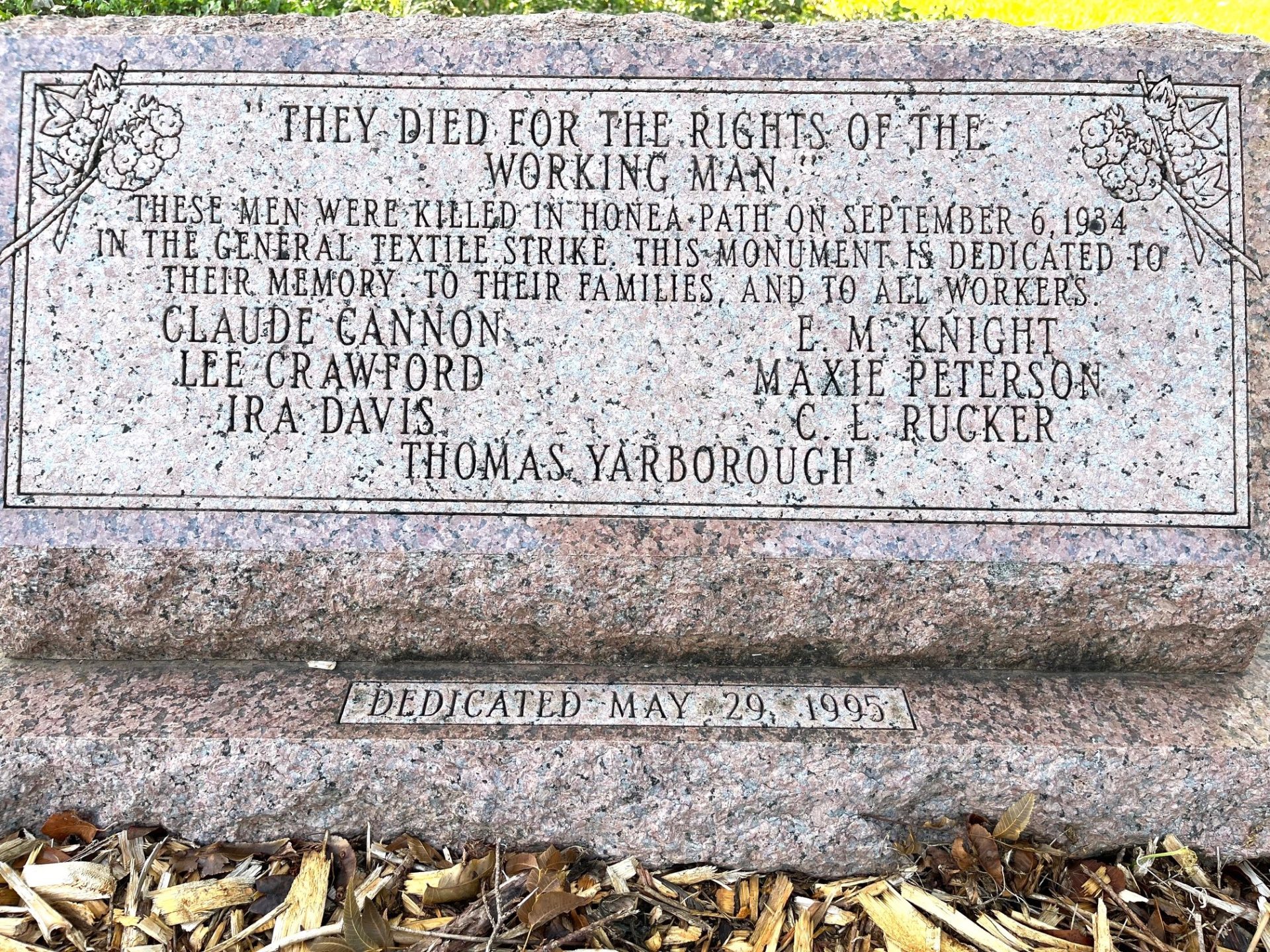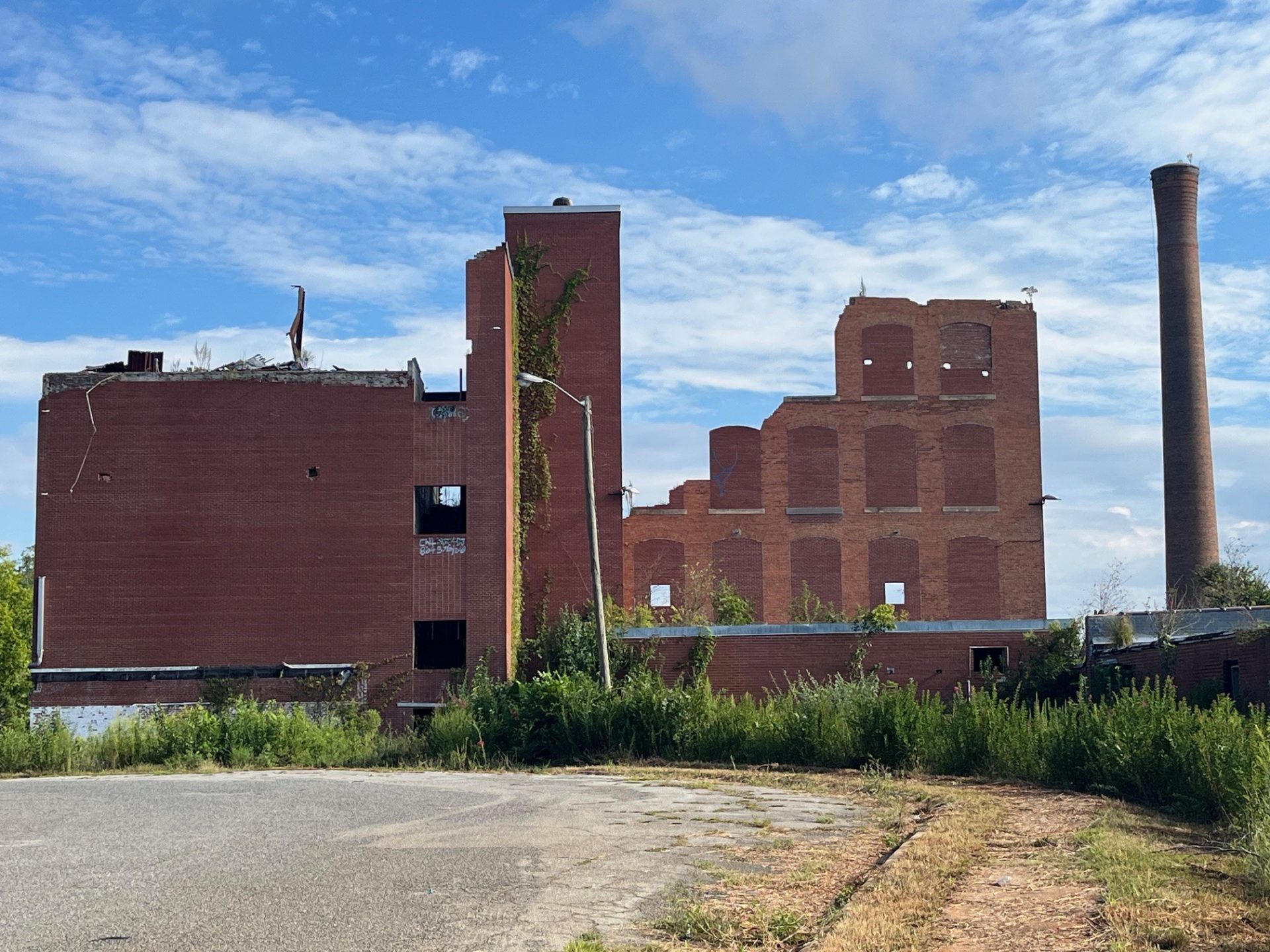By Paul Hyde
About eight or so AT&T employees were on strike the other day in a parking lot in Anderson County.
They didn’t march. Too hot for that.
They stood or sat in the intense August sun holding signs that said things like “HONK IF YOU SUPPORT WORKERS.”
Few drivers honked in sympathy.
“How long do you think the strike will last?” I asked.
“We hope it’ll end today,” one striker said with frustration. “We want to get back to work.”
It didn’t end that day. The strike against AT&T in the Southeast is in its third week, involving 17,000 workers in at least nine states, including South Carolina.
But even a small-scale strike is a rare and strange sight to see in our state.
South Carolina has the lowest rate of union members, at 2.3% of all employees, of any state in the country.
To understand one reason why, drive about 20 miles from the parking lot of striking workers to the town of Honea Path, population 3,788.
In a quiet corner of Dogwood Park, there’s a small granite monument with these words: “They died for the rights of the working man.”
Underneath the inscription are seven names.
Next, journey nine decades into the past.

Remembering Bloody Thursday
On Sept. 6, 1934, in the midst of the Great Depression, about 300 desperately poor workers formed a picket line at the huge Chiquola Mill in Honea Path, as the Gazette’s Jessica Holdman detailed in a recent article.
They were striking for higher wages and better working conditions.
Their protests were part of the textile strike that year that shook the Southeast and New England. It was the largest textile strike in the history of the United States, involving 400,000 workers.
But it was in the small town of Honea Path that something nightmarish happened.
At 7:45 p.m. Dan Beacham, the superintendent of the mill, who was also the mayor and magistrate of the town, ordered an armed posse of strikebreakers to fire into the crowd of strikers from inside the mill.
Six workers were shot in the back and killed; a seventh victim died later. At least 30 more were injured in the massacre known locally as Bloody Thursday.
But for decades, it seems that few people in Honea Path spoke of the incident, as if folks in the town were ashamed that people took up arms against their own neighbors.
It was the journalistic work of Dan Beacham’s grandson, Frank Beacham, that helped revive the memory of the massacre. The incident was also prominently featured in a searing 1995 documentary, “The Uprising of ’34.”
There’s also a music video about the massacre called “Honea Path” by Matthew Grimm and Red Smear.
The mill itself, which opened in 1903, closed exactly 100 years later. It’s now in ruins.
It was in 1995 that the stone marker was placed in nearby Dogwood Park, a poignant commemoration but one that took 60 years to finally happen.
Bloody Thursday’s 90th anniversary on Sept. 6 passed, as usual, almost unnoticed.
But perhaps we can take a moment to read the names of the victims: Claude Cannon, 27; Lee Crawford, 26; Thomas Yarbrough, 54; E.M. “Bill” Knight; Ira Davis, 26; Maxie Peterson, 27; and C.R. Rucker, 39.
A brutal crackdown
When that posse shot unarmed workers in the back, it dealt a brutal blow to the labor movement in South Carolina.
Whether the incident undermined the labor movement in our state or merely reflected pre-existing anti-union sentiment is a question that historians will continue to debate.
Historians argue that the Chiquola Mill massacre helped to inspire President Roosevelt in 1935 to sign the National Labor Relations Act, allowing workers to more freely unionize, collectively bargain and strike if necessary.
The Fair Labor Standards Act of 1938, meanwhile, established the 40-hour work week, created the minimum wage and curtailed child labor, as Holdman writes.
Today, South Carolina not only remains the least unionized state but, perhaps not unexpectedly, average wages in the state are toward the bottom of the nation.
A study published in the American Journal of Sociology in 2020 suggests that right-to-work laws, like those in South Carolina, lead to greater economic inequality by reducing the power of labor unions.
Workers have limited rights in this right-to-work state, but there’s no doubt they’ve made tremendous strides toward livable wages and better working conditions.
Nothing so brutal as Bloody Thursday could happen here again.
Yet some old attitudes remain about how we treat South Carolina’s low-income workers.
One could point to Gov. McMaster’s decision not to participate in a summer food program to benefit the children of South Carolina’s needy families or the fact that South Carolina remains one of only 10 states that still refuses to expand Medicaid eligibility to more poor adults.
The legacy of the Chiquola Mill massacre — if we remember it — is one that urges South Carolinians to do right by our most vulnerable citizens.
South Carolina has yet to realize the best version of itself.
Back in the sweltering parking lot in Anderson County, the striking workers are weary and packing up for the day after observing a tradition that still abides in South Carolina if only in muted form: The right of Americans to stand up for the dignity of the ordinary working person.
Come tomorrow, they’ll be there again.
Paul Hyde is a longtime journalist and teacher in the Upstate. He worked 18 years for the Greenville News as a columnist, editorial writer, education reporter and arts writer. He holds undergraduate and graduate degrees from Clemson and Harvard universities. He has written for the Houston Chronicle, Dallas Morning News and USA Today, among other publications. He currently is a regular contributor to the Greenville Journal, Atlanta Journal-Constitution and Classical Voice North America.










